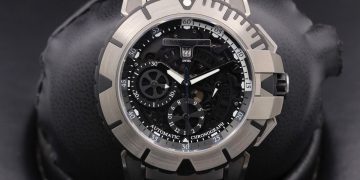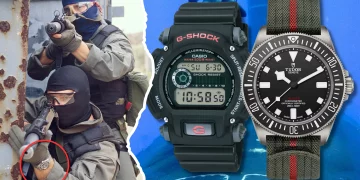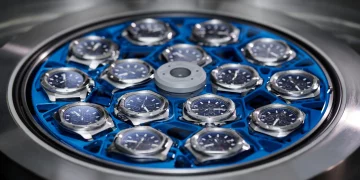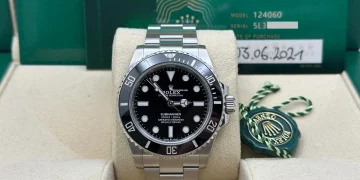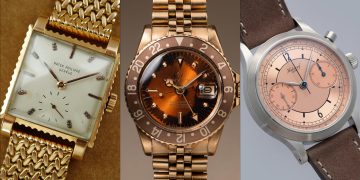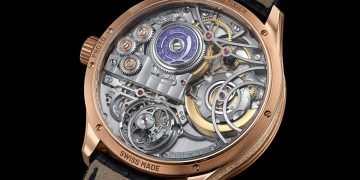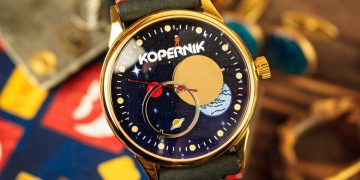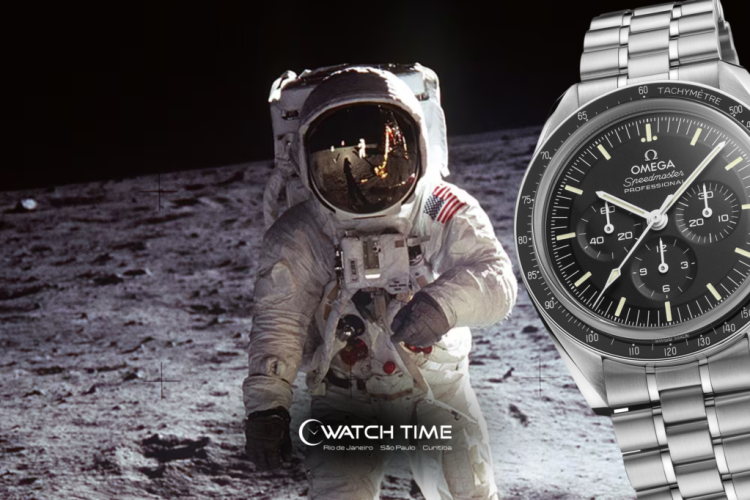The Omega Speedmaster has long been regarded as one of the most iconic and beloved timepieces in the watch industry. Since its introduction in 1957, it has captivated watch enthusiasts and collectors alike for its design, precision, and, most notably, its enduring connection to space exploration. While the Speedmaster is well known for its rich history and association with NASA, its true brilliance lies in its cutting-edge technological advancements, especially in the world of horology.
The Speedmaster is not just a watch; it is a testament to the evolution of watchmaking technology. Whether it’s the mechanical innovation of its movement, the robust design features that make it a tool watch, or its adaptation to modern advancements in materials and precision, the Speedmaster has consistently set the bar for what a chronograph can achieve.
In this article, we will dive deep into the technological aspects of the Omega Speedmaster, examining the various innovations and engineering feats that have made it a standout in the world of timekeeping. From the early mechanical movements to the state-of-the-art Co-Axial escapement technology, and from its role in space missions to modern-day advancements, we will explore how the Speedmaster continues to push the boundaries of what is possible in watchmaking.
A Brief Overview of the Omega Speedmaster’s Technological History
Before we dive into the specific technological innovations that have defined the Omega Speedmaster, it’s essential to understand the context in which this remarkable timepiece was born. The Speedmaster was introduced by Omega in 1957 as part of their “Professional” series of watches, designed for professionals in various fields, particularly motorsport, aviation, and space exploration. It was the first watch to be marketed specifically as a chronograph, offering both timekeeping and stopwatch functionality.
However, it wasn’t until 1965 that the Speedmaster achieved worldwide fame when NASA selected it as the official watch for the Apollo space program. The rigorous testing process that the Speedmaster underwent to earn its place in spaceflight was a testament to its technological reliability and accuracy. Since then, the Speedmaster has been synonymous with precision and performance, both on Earth and in space.
As Omega continued to innovate, the Speedmaster evolved to incorporate cutting-edge technology and materials. While the model has remained largely faithful to its original design, Omega has continuously improved the watch’s movement, durability, and accuracy, ensuring that the Speedmaster remains relevant in an ever-evolving horological landscape.
The Technology Behind the Omega Speedmaster Movement
At the heart of the Omega Speedmaster lies its movement, and this is where much of its technological brilliance resides. The Speedmaster has been equipped with several different movements over the years, with Omega’s focus on both mechanical ingenuity and precision.
The Caliber 321: The Original Speedmaster Movement
The first movement ever used in the Omega Speedmaster was the Caliber 321, which was introduced in the 1950s. This chronograph movement is powered by a column wheel mechanism, a design that is still highly regarded in horological circles for its smooth operation and reliability.
The Caliber 321 was a manual-winding movement with a column-wheel chronograph function, and it was a critical part of the Speedmaster’s success. The column wheel system, which controls the start, stop, and reset functions of the chronograph, is known for its durability and precision, which made it perfect for both the harsh conditions of space travel and the demanding requirements of motorsports.
The movement also featured a chronograph that could measure elapsed time up to 30 minutes, making it highly useful for professionals who needed precise timekeeping. The Caliber 321’s performance under extreme conditions contributed to its selection by NASA for the Apollo missions, and it remained the heart of the Speedmaster until the late 1960s.
The Caliber 861 and 1861: The Evolution of the Movement
In the late 1960s, Omega began to update the Speedmaster’s movement to meet the increasing demand for precision and reliability. The Caliber 861 was introduced as a successor to the Caliber 321, and it represented an important leap forward in terms of cost-effectiveness and mass production capabilities. Unlike the Caliber 321, which had an intricate column-wheel design, the Caliber 861 used a more streamlined cam-switching mechanism, which helped improve efficiency and made the movement easier to produce.
The Caliber 861 offered the same chronograph functionality as its predecessor, with a 30-minute chronograph and a power reserve of approximately 50 hours. The movement also featured a frequency of 21,600 vibrations per hour (vph), which helped maintain accurate timekeeping while providing the necessary precision for the chronograph function.
Omega continued to refine the movement in the 1990s with the introduction of the Caliber 1861, which was largely similar to the Caliber 861 but with some additional improvements. This movement was used in the “Moonwatch” versions of the Speedmaster, further cementing the model’s reputation as the official timepiece of NASA and a staple of space exploration.
The Co-Axial Caliber 3861: Pushing the Boundaries of Precision
Perhaps the most significant technological advancement in recent years for the Omega Speedmaster came in 2019 with the release of the Caliber 3861. This movement features Omega’s revolutionary Co-Axial escapement, a technology that was developed by watchmaking legend George Daniels and later adopted by Omega to reduce friction in the escapement system, increasing the longevity and precision of the movement.
The Co-Axial escapement works by reducing the amount of contact between the components, ensuring that the watch runs more smoothly and with greater accuracy over time. The result is a movement that is not only more reliable but also more resistant to wear, meaning that the Speedmaster equipped with the Co-Axial Caliber 3861 will perform better for longer than previous versions.
Additionally, the Co-Axial movement also improves the efficiency of the energy transfer from the mainspring to the escapement, allowing for greater power reserve. The Caliber 3861 boasts a power reserve of 50 hours, which is comparable to other modern chronograph movements, but with enhanced accuracy and reduced maintenance needs.

Master Chronometer Certification: Ensuring the Highest Standards
One of the most significant achievements of the Speedmaster in recent years is its inclusion in Omega’s Master Chronometer certification program. Introduced by the Swiss Federal Institute of Metrology (METAS), the Master Chronometer certification is one of the most rigorous tests a watch can undergo, ensuring that it meets the highest standards of accuracy, performance, and resistance to magnetic fields.
To earn the Master Chronometer designation, the Speedmaster must undergo a series of tests, including testing for accuracy at multiple positions and temperatures, as well as resistance to magnetic fields of up to 15,000 gauss. This is an essential feature for modern watch users, as electronic devices and other sources of magnetic interference can often disrupt the accuracy of mechanical movements. The Speedmaster’s ability to resist such interference ensures that it remains reliable no matter the environment, whether it’s in space, a high-tech laboratory, or the bustling urban environment.
Advanced Materials in the Omega Speedmaster
While the movement is the heart of the Omega Speedmaster, the materials used in its construction also play a critical role in the watch’s overall performance and longevity. Omega has consistently pushed the boundaries of materials technology to ensure that the Speedmaster is not only precise but also durable enough to withstand the harshest conditions.
Stainless Steel and Titanium: Durability Meets Elegance
For many years, the case of the Speedmaster was made from stainless steel, which offered a combination of strength and elegance. Stainless steel is a durable material that resists corrosion and damage from everyday wear and tear, making it an ideal choice for a tool watch like the Speedmaster.
In recent years, Omega has also introduced models with titanium cases. Titanium is known for being lighter than stainless steel, making the Speedmaster more comfortable to wear for extended periods. It is also highly resistant to scratches and corrosion, which makes it perfect for those who want a rugged watch that can stand up to the rigors of daily life or extreme conditions.
Ceramic and Sedna Gold: Innovation in Materials
In addition to stainless steel and titanium, Omega has incorporated new materials like ceramic and Sedna gold into the Speedmaster’s design. Ceramic, which is highly scratch-resistant and lightweight, has been used in the bezel of certain Speedmaster models, offering an aesthetic upgrade while improving durability. Sedna gold, a proprietary rose gold alloy developed by Omega, has also been used in limited edition Speedmaster models, giving the watch a unique and luxurious appearance without sacrificing its robustness.
These materials not only enhance the aesthetic appeal of the Speedmaster but also improve its performance, ensuring that the watch is both visually striking and built to last.
Conclusion: The Omega Speedmaster—A Technological Triumph
The Omega Speedmaster has proven itself to be a true technological marvel in the world of horology. From its early days with the Caliber 321 to its cutting-edge innovations like the Co-Axial Caliber 3861 and Master Chronometer certification, the Speedmaster continues to set the standard for precision, reliability, and performance. Whether it’s the rigorous testing it underwent to earn its place in space exploration or its use of advanced materials and movements, the Speedmaster is a testament to Omega’s commitment to pushing the boundaries of what is possible in watchmaking.
For watch enthusiasts, collectors, and those who value technological excellence, the Omega Speedmaster is not just a timepiece; it’s a symbol of human ingenuity and the pursuit of perfection. Its combination of classic design, innovative technology, and a rich history ensures that the Speedmaster will continue to be at the forefront of horological advancements for many years to come.



